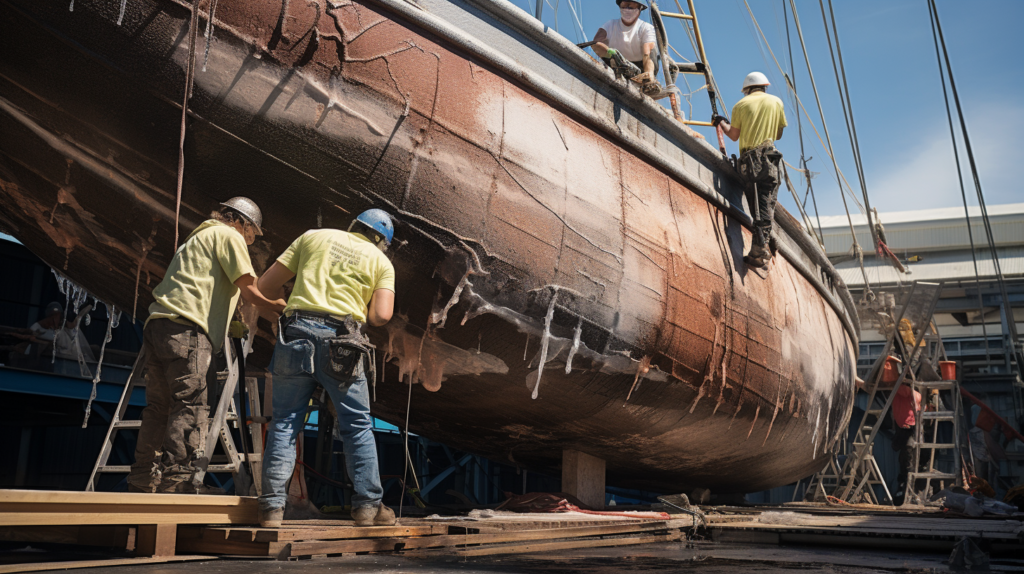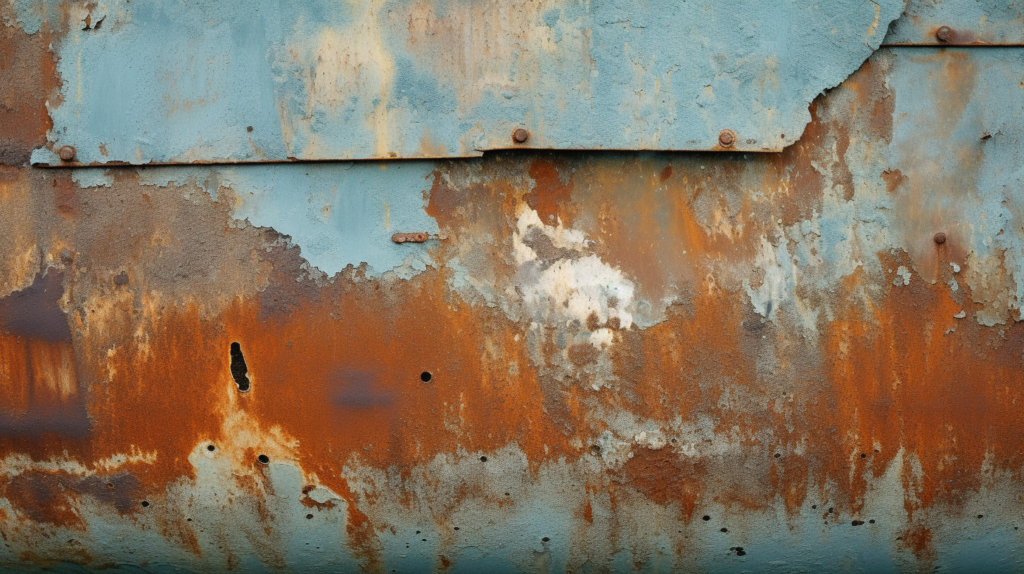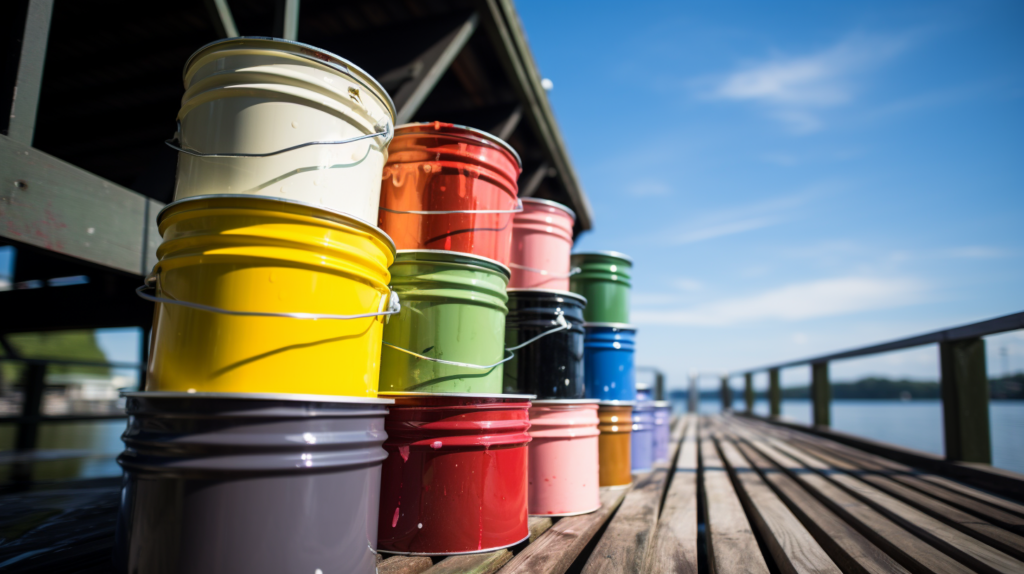Table of Contents
Table of Contents
How To Remove Bottom Paint From A Boat

Ever wondered why your boat’s performance seems to be lagging or noticed an unusual amount of growth on the underside? The culprit could be the bottom paint that has worn out and needs removal.
In this article, we’ve demystified everything you need to know about removing bottom paint from your seafaring vessel. From identifying specific types of paints to available methods for removal, we’ll guide you through each step so you can get back on track and sail smoothly again.
Ready for a cleaner ride? Let’s dive in!
Key Takeaways
- Dry scraping with a putty knife and using drag-type scrapers are effective methods for removing bottom paint from a boat.
- Sandblasting or soda blasting is recommended for removing bottom paint from aluminum boats.
- There are specific strippers available for different types of bottom paints that can aid in the removal process.
- Properly preparing the surface before removing the paint is crucial.
What is Bottom Paint and Why Do Boats Require it?

Bottom paint is a specially formulated type of paint that is applied to the bottom hull of boats. It is necessary because it helps prevent fouling, which refers to the growth of organisms such as barnacles and algae on the boat’s hull.
Definition of bottom paint
Bottom paint, also known as antifouling paint, is a specialized coating applied to the hull of a boat. It serves to protect the surface from marine organisms like algae and barnacles that can attach themselves, slow your boat down, and cause damage over time.
This type of paint has properties that help deter these organisms while withstanding harsh aquatic environments. The application of bottom paint creates a barrier between water and hull material—whether it’s fiberglass, wood, or metal—preserving the integrity of your vessel for smoother sailing adventures.
Purpose of bottom paint
Bottom paint serves a crucial role in maintaining the performance and longevity of a boat. It works primarily to prevent harmful growth or ‘fouling’ from algae, barnacles, and other marine organisms.
Fouling can cause various problems for your boat such as increased fuel consumption due to drag, reduced speed, and potential damage to the hull.
Applying bottom paint provides an antifouling safeguard that actively discourages these unwanted guests from attaching themselves to your vessel’s underside. This type of paint contains specific chemicals, like copper-based biocides, which deter marine life without causing harm to the surrounding environment.
Essentially, it forms a protective layer against biofouling and helps prolong the lifespan of your watercraft by keeping its underwater surface clean and smooth.
Importance of preventing fouling
Fouling poses serious threats to any sailboat’s hull. Marine organisms like algae, barnacles, and zebra mussels attach themselves to the boat bottom over time due to constant exposure to water.
These stubborn intruders not only ruin your boat’s aesthetic appeal but more importantly, they add a significant amount of weight and can disrupt hydrodynamic efficiency. This means increased drag which in turn leads to reduced speed and accelerated fuel consumption.
Moreover, fouling can cause irreversible damage if left untreated too long as it may lead to corrosion or pitting on metal hulls. Therefore, preventing fouling is crucial in maintaining good performance of your vessel while also extending its lifespan.
Using anti-fouling paints such as ablative bottom paints or hard-modified epoxy paints helps combat these unwanted hitchhikers effectively by making the surface inhospitable for them.
Regular maintenance is key – preemptive actions always outperform restorative measures! Remember – a clean hull is a happy one!
Types of Bottom Paints

There are several types of bottom paints available for boats, including ablative bottom paints, hard-modified epoxy paints, water-based bottom paints, aluminum-safe bottom paints, and specialty antifouling paints.
Ablative bottom paints
Ablative bottom paints are a popular type of bottom paint used on boats. These paints contain special additives that gradually erode and wear away as the boat moves through the water, releasing a controlled amount of biocide to prevent fouling.
This self-polishing feature allows for consistent protection against marine growth without requiring frequent repainting. Sailors and sailboat owners often choose ablative paints for their ease of use and long-lasting effectiveness in various water conditions.
It’s important to follow manufacturer instructions when applying ablative bottom paints to ensure maximum performance and protection for your boat.
Hard-modified epoxy paints
Hard-modified epoxy paints are a type of bottom paint that provides excellent protection against marine fouling. These paints are known for their durability and long-lasting performance.
They are formulated with high-quality resins and additives, making them resistant to abrasion and chemicals. Sailors and sailboat owners often choose hard-modified epoxy paints for their boats because they offer a hard surface that can withstand harsh underwater conditions.
When applying hard-modified epoxy paints, it is important to follow the manufacturer’s instructions carefully. The surface should be properly prepared by cleaning, sanding, and priming before applying the paint.
It is recommended to apply multiple coats for optimal protection. Hard-modified epoxy paints provide effective antifouling properties, preventing barnacles, algae, and other organisms from attaching to the boat’s hull.
Maintenance of hard-modified epoxy paints involves regular cleaning and inspection of the hull to ensure its integrity. If any damage or signs of wear are noticed, it is necessary to touch up or repaint as needed.
Water-based bottom paints
Water-based bottom paints are an environmentally friendly option for boat owners. These paints use water as a solvent instead of harsh chemicals, making them safer to handle and dispose of.
They are also known for their low VOC (volatile organic compound) content, reducing potential harm to marine life. Water-based bottom paints are easy to apply and clean up, making the process more convenient for boat owners.
While they may not offer the same level of durability as other types of bottom paints, they are a great choice for those looking for a more eco-friendly option that still provides effective antifouling protection.
Aluminum safe bottom paints
Aluminum-safe bottom paints are specially formulated to protect the hulls of aluminum boats from corrosion and fouling. These paints contain ingredients that create a protective barrier between the metal surface and the water, preventing damage and extending the life of the boat.
By using aluminum-safe bottom paints, sailors and sailboat owners can ensure that their vessels stay in top condition, even in corrosive marine environments. It is important to choose an appropriate type of bottom paint based on your specific needs and consult with experts if necessary.
Specialty antifouling paints
Specialty antifouling paints are a specific type of bottom paint that is designed to provide enhanced protection against fouling organisms in unique conditions. These paints often contain additional ingredients, such as copper or biocides, which help to deter the growth of marine organisms like barnacles and algae.
They are particularly useful for boats that frequent warm waters or areas with high fouling potential. Specialty antifouling paints can provide effective long-term protection and help reduce the need for frequent maintenance and repainting.
Choosing the Right Bottom Paint
When choosing the right bottom paint for your boat, consider factors such as the type of boat you have, the location you’ll be sailing in, and the water conditions you’ll be facing.
Also, make sure to follow the proper application process and apply the recommended number of coats.
Factors to consider (type of boat, location, water conditions)
When choosing the right bottom paint for your boat, there are several factors to consider. These include:
- Type of boat: Different types of boats require different types of bottom paints. Consider the material of your boat, such as fiberglass or aluminum, and choose a bottom paint that is compatible with it.
- Location: The location where you primarily sail or dock your boat can impact the type of bottom paint you need. Saltwater environments may require more durable and protective bottom paints compared to freshwater areas.
- Water conditions: If you frequently encounter rough waters or fast currents, it’s important to choose a bottom paint that can withstand these conditions. and provide optimal performance.
- Antifouling properties: Consider the level of fouling in the area where you typically sail. If there is a high presence of marine growths such as barnacles and algae, choose a bottom paint with strong antifouling properties.
- Environmental regulations: Be aware of any local or regional regulations regarding using certain types of bottom paints. Some areas restrict the use of certain chemicals or require environmentally-friendly options.
Application process
To apply bottom paint to your boat, follow these steps:
- Prepare the surface by scrubbing it with boat scrub and rinsing it clean.
- Use a damp cloth to rub in the VS721 Bottom Coat, which can help with the removal process.
- Dry scraping with a thin-bladed putty knife and a sharp drag-type scraper can remove about 90 percent of the bottom paint.
- If you have an aluminum boat, sandblasting or soda blasting is the most effective method for removing bottom paint.
- Consider using specific strippers designed for the type of bottom paint you have, such as ablative or hard paints.
- Blasting is considered the fastest, most efficient, and economical method for removing antifouling paint.
- Alternatively, walnut shell blasting can also be used as an alternative method for removing bottom paint.
Number of coats needed
Choosing the right number of coats for your boat’s bottom paint is essential to ensure long-lasting protection against fouling. Factors such as the type of boat, location, and water conditions should be considered when determining how many coats are needed.
It is recommended to follow the manufacturer’s instructions for application guidelines. Applying multiple thin coats rather than one thick coat can provide better coverage and adhesion.
Keep in mind that applying too few coats may result in inadequate protection while applying too many can lead to excessive build-up and potential issues. Consider the specific needs of your boat and consult with professionals if necessary to determine the optimal number of coats for your bottom paint job.
Maintenance and Repainting
To ensure the longevity of your boat’s bottom paint, regular maintenance and repainting are essential. Discover the signs it’s time for a fresh coat, where to buy bottom paint and helpful tips for removal and repainting.
Dive into this crucial step in boat care now!
Signs it’s time to repaint
Over time, the bottom paint on your boat will begin to deteriorate and lose its effectiveness. This is why it’s important to know the signs that it’s time to repaint. Look out for excessive fouling, such as barnacles or algae growth, which indicates that the bottom paint is no longer doing its job.
Additionally, if you notice a decrease in speed or increased fuel consumption, it may result from a compromised bottom hull due to worn-out paint. Another sign to watch for is the blistering or peeling of the existing paint layers.
These signs indicate that it’s time to invest in repainting your boat’s hull for optimal performance and protection against fouling.
Where to buy bottom paint
You can find bottom paint for your boat at various places. Many marine supply stores carry a range of bottom paints suitable for different types of boats and water conditions. Online retailers specializing in boating supplies also offer a wide selection of bottom paint options.
Additionally, you may be able to purchase bottom paint directly from boatyards or professional painting services. It’s important to choose a reputable source and consult with experts who can guide you in selecting the right type of paint for your specific needs.
Tips for removal and repainting
- Use a thin-bladed putty knife or sharp drag-type scraper to dry scrape the bottom paint. This method can remove about 90 percent of the paint.
- Consider sandblasting, including soda blasting or sanding, for effective removal of bottom paint on aluminum boats.
- Before removing the bottom paint, prepare the surface by scrubbing it with boat scrub and rinsing it clean.
- Rubbing in the VS721 Bottom Coat with a damp cloth can help with the removal process.
- Explore alternative methods such as soda blasting or walnut shell blasting for removing bottom paint.
- Choose specific strippers designed for ablative or hard paints when removing different types of bottom paint.
- Blasting is considered the fastest, most efficient, and economical method for removing antifouling paint.
- If needed, seek professional services that specialize in boat bottom paint removal to assist with the process.
Remember, removing bottom paint can be labor-intensive and may not fully restore your boat’s gelcoat to its original luster.
Conclusion
Removing bottom paint from a boat can be a challenging task, but with the right methods and tools, it is possible. Dry scraping with a putty knife and using drag-type scrapers can remove most of the paint.
Sandblasting or soda blasting are effective alternatives for aluminum boats. Additionally, there are specific strippers available for different types of bottom paints. Remember to properly prepare the surface before removing the paint, and consider professional services if needed.
FAQs
1. What are the methods to remove bottom paint from a boat?
You can remove old bottom paint from a boat through options such as sanding, chemical stripping, or using soda blasting techniques.
2. Is it safe to do it yourself when removing bottom paint?
Yes, but safety measures like wearing eye protection and a respirator are necessary due to the highly toxic sanding dust produced while you’re working on the hull bottom of your boat.
3. How does one use a barrier coat in this process?
A barrier coat is usually applied after all the old paint has been removed and before applying fresh hard bottom paint. It helps protect the gel coat underneath against potential damage during future removals.
4. Can I hire someone for this task?
Sure! If you consider this too labor-intensive or time-consuming, hiring a professional would be an apt choice; especially if it’s about dealing with an expansive surface area like that of a 30-foot trailered boat.
5. Can I use regular sandpaper for doing this job?
While both wet sanding and using tools like a sander or pain scraper could help get rid of old flakey paints; opting for specialized acetone-based products or chemically formulated paint removers might offer better results depending upon factors like the type of bottom paint used before etc..
6 . What does “soda blasted” refer to in terms of removing paint?
“Soda blasting” involves propelling bicarbonate particles (“soda”) on your “boat’s” underparts at high pressure which effectively strips off any traceable layers ensuring you have successfully managed to remove all the bottom paint.

